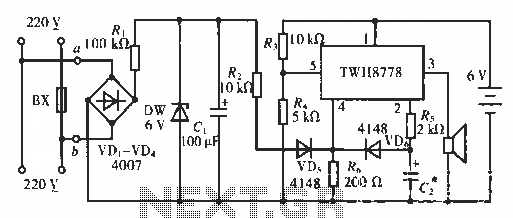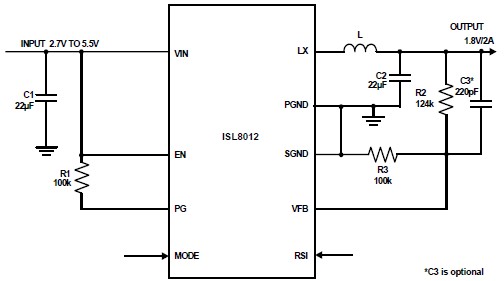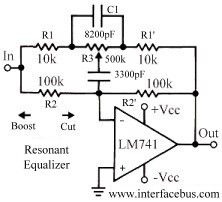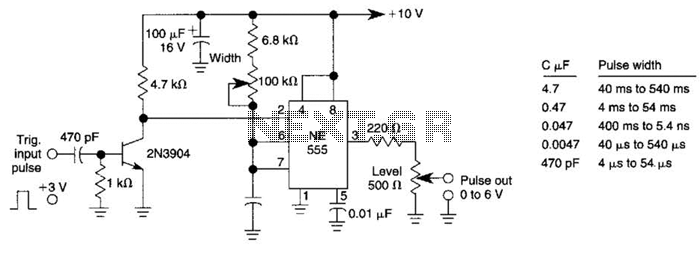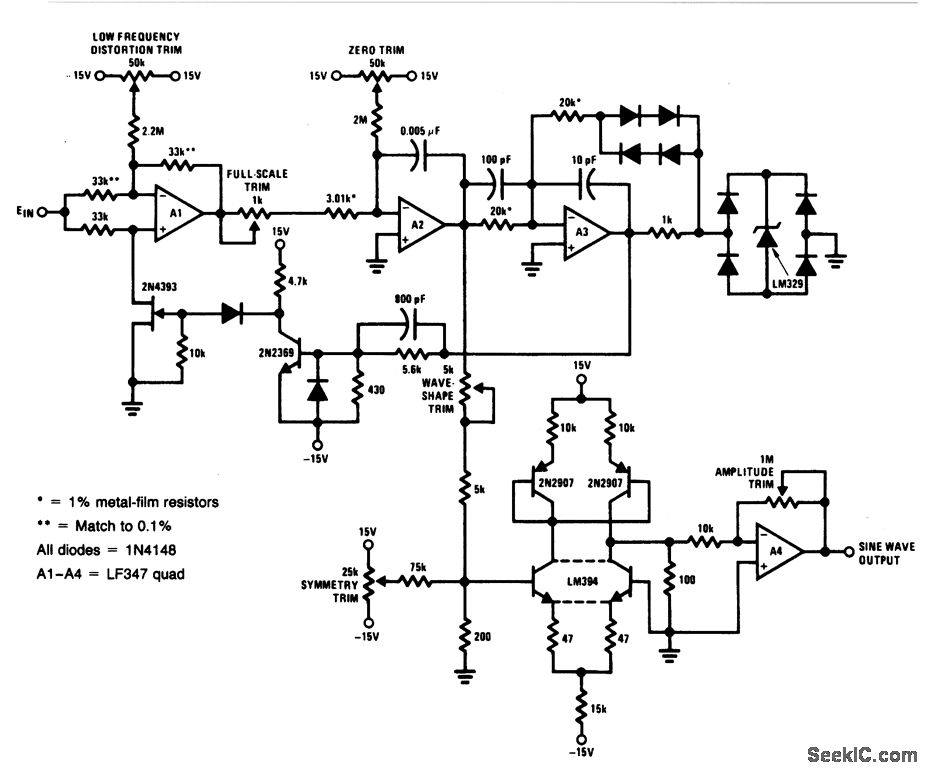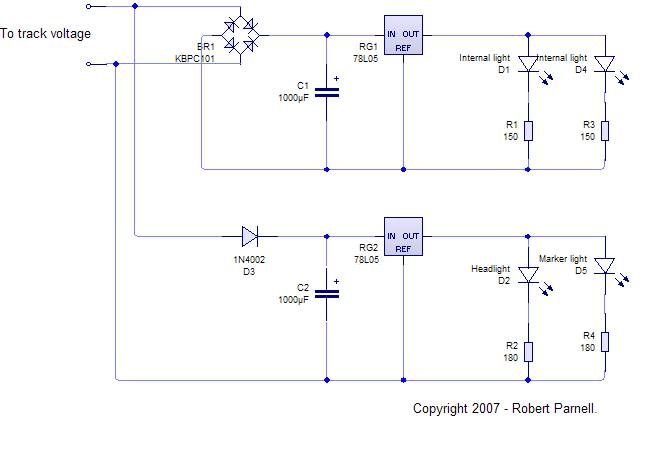
Crystal Controlled FM Transmitter Circuit
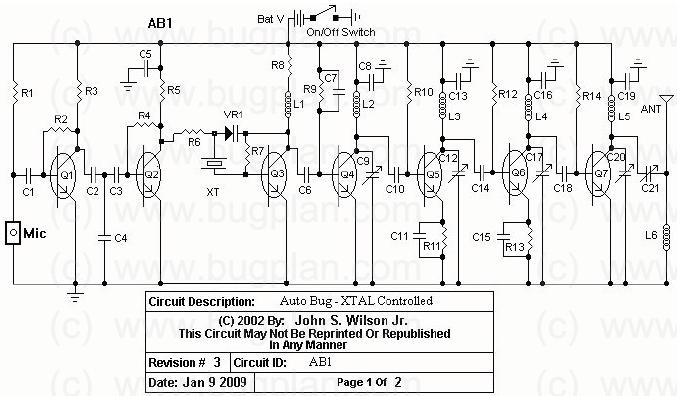
This circuit operates between 150 to 165 MHz. The crystals used are Digi-Key Electronics Barrel Crystals of the CA-301 type, which are relatively inexpensive. Any fundamental crystal with a frequency between 14 and 17 MHz can produce an output frequency ranging from 140 to 170 MHz, provided that the crystal has a load capacitance of approximately 18 pF. To build this transmitter on a custom frequency, divide the desired transmit frequency by 10 and follow the instructions below.
The circuit functions as a frequency generator utilizing a fundamental crystal oscillator to achieve the desired output frequency range. The choice of the CA-301 type barrel crystal is significant due to its stability and low-cost nature, making it suitable for various applications in RF transmission. The output frequency can be adjusted by selecting appropriate crystals within the specified frequency range, ensuring that the load capacitance remains around 18 pF to maintain optimal performance.
To create a custom frequency transmitter, the user must first determine the target output frequency and divide it by 10. This division is essential as it aligns the fundamental frequency of the selected crystal with the desired output. For instance, if a target transmission frequency of 160 MHz is required, a crystal with a fundamental frequency of 16 MHz should be used, as 160 MHz divided by 10 equals 16 MHz.
The circuit typically includes additional components such as capacitors, resistors, and possibly an inductor to form a tank circuit that helps stabilize the oscillation and enhance the output signal. Proper layout and design considerations must be taken into account to minimize parasitic capacitance and inductance, which can adversely affect the performance of the oscillator.
Furthermore, the output stage of the circuit may incorporate an amplifier to boost the signal strength for transmission purposes. The amplifier should be chosen based on the required output power and linearity specifications. It is also advisable to include filtering components to reduce harmonic distortion and ensure that the transmitted signal meets regulatory standards for spectral purity.
In summary, this circuit design provides a versatile platform for generating RF signals in the 150 to 165 MHz range, utilizing low-cost crystal oscillators while allowing for customization of the output frequency through careful selection of components and design parameters.This circuit operate between 150 to 165 Mhz. The Crystals I use Are The Digi-Key Electronics Barrel Crystals CA-301 Type which cost a couple of bucks per crystal. Virtually any Fundamental Crystal between 14 and 17 Mhz will output a frequency of between 140 to 170 Mhz, if the crystal has a load capacitance of around 18 pf.
If you wish to build this transmitter on A custom frequency simply Divide your desired transmit frequency by 10 and follow the instructions below: 🔗 External reference
The circuit functions as a frequency generator utilizing a fundamental crystal oscillator to achieve the desired output frequency range. The choice of the CA-301 type barrel crystal is significant due to its stability and low-cost nature, making it suitable for various applications in RF transmission. The output frequency can be adjusted by selecting appropriate crystals within the specified frequency range, ensuring that the load capacitance remains around 18 pF to maintain optimal performance.
To create a custom frequency transmitter, the user must first determine the target output frequency and divide it by 10. This division is essential as it aligns the fundamental frequency of the selected crystal with the desired output. For instance, if a target transmission frequency of 160 MHz is required, a crystal with a fundamental frequency of 16 MHz should be used, as 160 MHz divided by 10 equals 16 MHz.
The circuit typically includes additional components such as capacitors, resistors, and possibly an inductor to form a tank circuit that helps stabilize the oscillation and enhance the output signal. Proper layout and design considerations must be taken into account to minimize parasitic capacitance and inductance, which can adversely affect the performance of the oscillator.
Furthermore, the output stage of the circuit may incorporate an amplifier to boost the signal strength for transmission purposes. The amplifier should be chosen based on the required output power and linearity specifications. It is also advisable to include filtering components to reduce harmonic distortion and ensure that the transmitted signal meets regulatory standards for spectral purity.
In summary, this circuit design provides a versatile platform for generating RF signals in the 150 to 165 MHz range, utilizing low-cost crystal oscillators while allowing for customization of the output frequency through careful selection of components and design parameters.This circuit operate between 150 to 165 Mhz. The Crystals I use Are The Digi-Key Electronics Barrel Crystals CA-301 Type which cost a couple of bucks per crystal. Virtually any Fundamental Crystal between 14 and 17 Mhz will output a frequency of between 140 to 170 Mhz, if the crystal has a load capacitance of around 18 pf.
If you wish to build this transmitter on A custom frequency simply Divide your desired transmit frequency by 10 and follow the instructions below: 🔗 External reference
